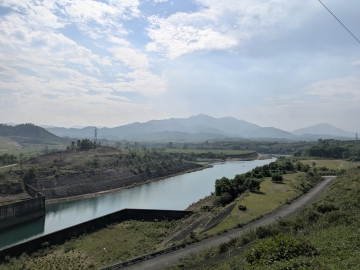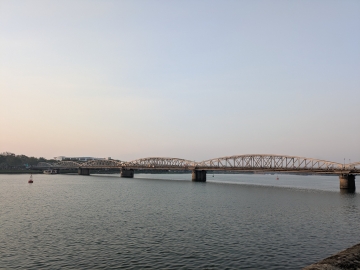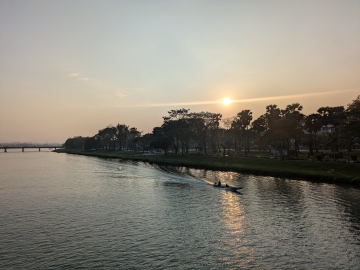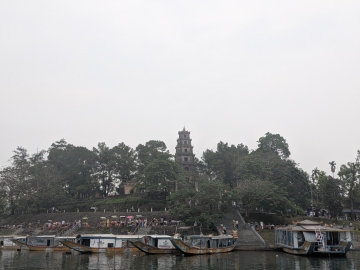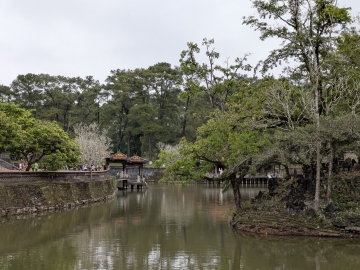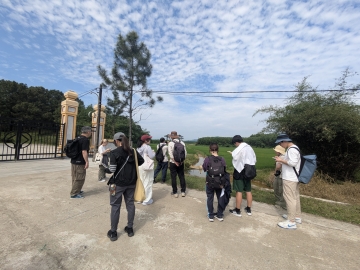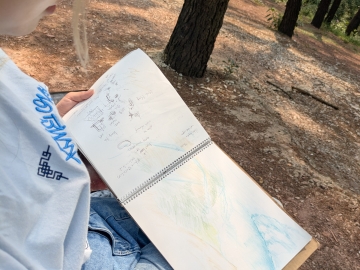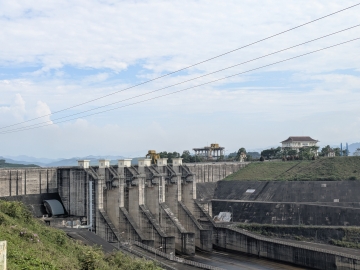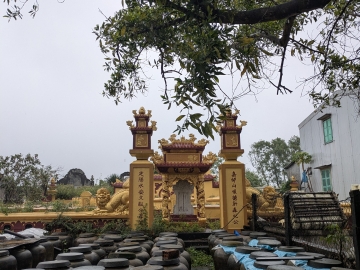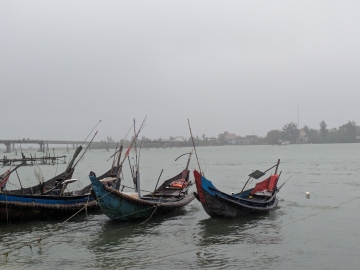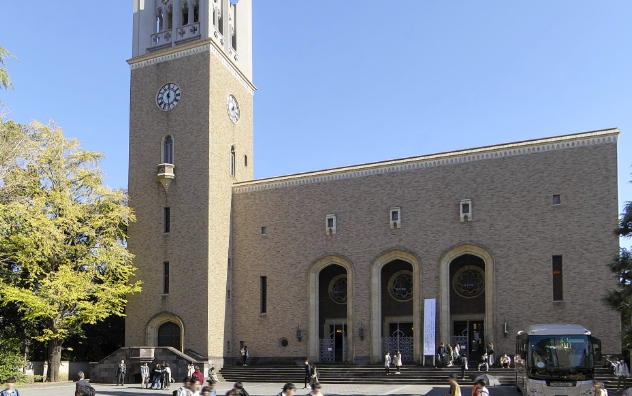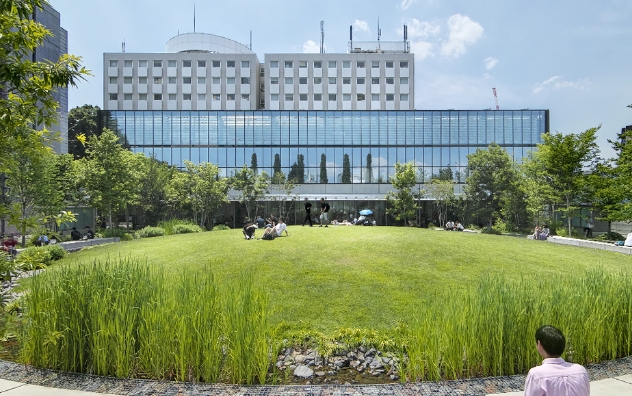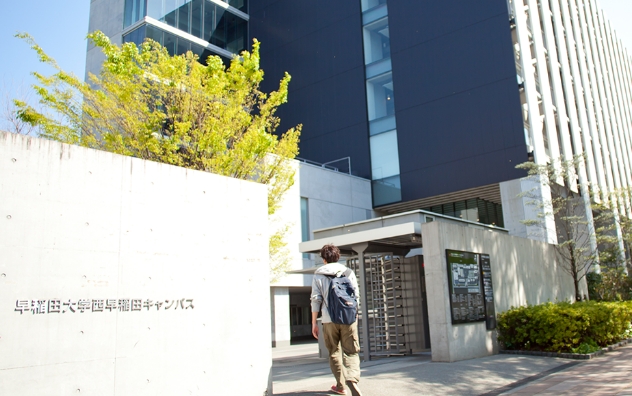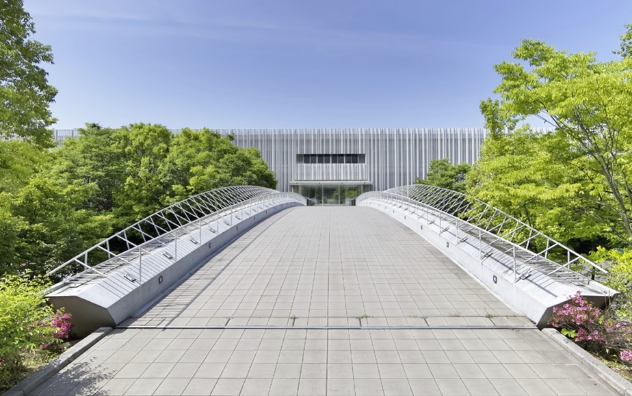Cross-border Collaboration for Livelihood Improvement, Water Management, and Heritage Preservation: Waseda in Hue, Vietnam
Wed, Apr 9, 2025-
Tags
March is a time of transition in Japan: it’s the dawn of spring, ushering in the end of a school year and the beginning of another, mostly a time for leisure. At the Yaguchi Lab in Waseda’s Department of Architecture, it’s anything but.
This past March, two members from Yaguchi Lab (myself and a junior who has just graduated) embarked on a collaborative research trip with Hue University of Sciences in Vietnam. We were also joined by students from Mashiko Lab from the School of Social Sciences at Waseda University and Sugano Lab from the Art Department of the University of Tsukuba. This research trip reaped the fruit of the 25-years-long collaboration between Waseda University and Hue University of Sciences. It is also the product of a new Memorandum of Understanding (MOU) signed in August of 2024 between the two institutions, with a focus on research related to comprehensive regional management and cultural and historical heritage preservation. This research trip is the first of many to come and its aim was the design and management of historical and cultural heritage in the Huong River Basin of Hue. The subjects of investigation are not restricted to historical monuments and heritage sites but also encompass the village structure, agri-aqua livelihood, the local traditional lifestyle of living with water, and other social aspects of the built environment.
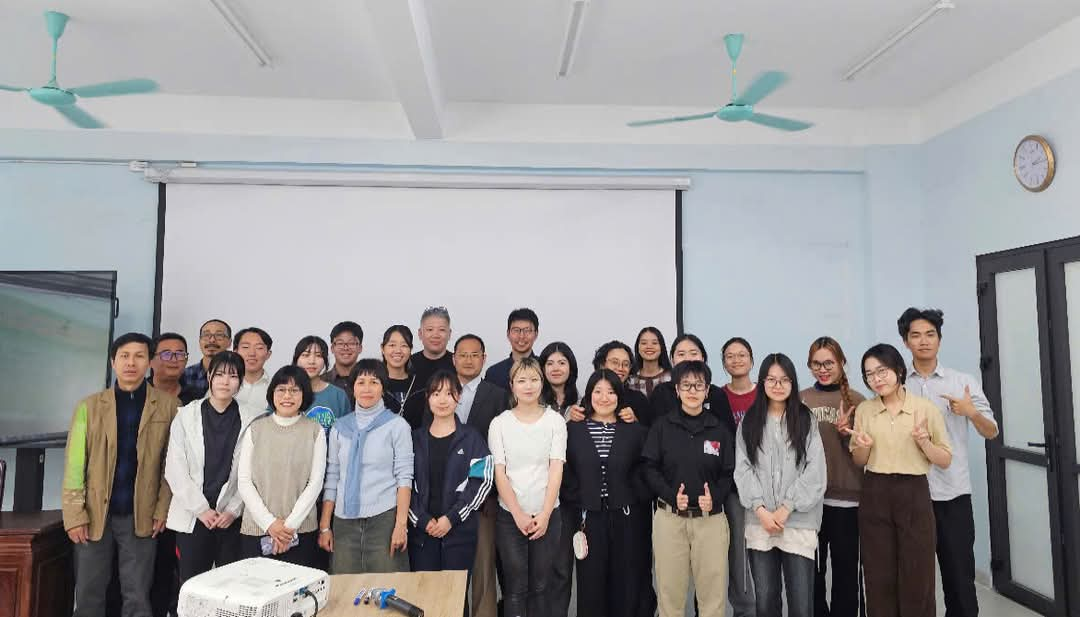
Workshop members, professors, and faculty members
Although it took place in March, the work for this research trip began long before. From November 2024 to February 2025, students from Waseda University and Tsukuba University conducted joint investigations in preparation for the research trip. The research trip itself was divided into three parts: pre-workshop site visits; the workshop where students from Japan collaborated with students in Vietnam; and the post-workshop investigation wherein the students from Japan conducted investigations into their research interests.
Before Hue
Before traveling to Hue, the teams from Waseda University and the University of Tsukuba conducted joint preparatory research to familiarize ourselves with the region, its villages, the lifestyle, and the livelihoods of the people. Given that Hue was an unfamiliar location to most in the research group, it was crucial to understand the social, cultural, and economic aspects of the area. Therefore, we diligently explored the local history, folk tales, traditions, agri-aqua activities, and the advancement of urban expansion and tourism. Additionally, we examined the region’s vulnerability to disasters, especially floods, which are a significant concern in this part of Vietnam. Although not as fruitful as we wanted it to be due to the limited availability of information online and the language barrier, this preliminary research gave us a notion of what to expect and greatly helped us formulate our hypotheses and research questions.
- Ta Trach hydropower dam
- Truong Tien Bridge over the Perfume River
- Perfume River as the sun is setting
- Thien Mu Pagoda from the Perfume River
- Inside the Tu Duc tomb complex
- The view from Gia Long’s tomb
The research team also received lectures from the esteemed Professor Emeritus Shigeru Satoh (Waseda University) on the history of Hue and its many magnificent monuments. We learned about the collaborations between Waseda and Hue University of Sciences and their cooperation with local agencies on the conservation and utilization of historical and cultural heritage sites in this ancient capital of Vietnam. We also witnessed how the results of that 25-year-long effort have been incorporated into current conservation acts and the positive impacts it has on the local community.
This preparatory phase equipped us with the knowledge necessary to approach the region and its people with sensitivity and awareness, ensuring that we respected their ways of life, understood the challenges they faced, and were mindful of the locality.
At Hue
Pre-workshop
The program began with a warm welcome at Hue University of Sciences, followed by an introductory group site visit to historically and environmentally significant locations, including Gia Long’s tomb, Ta Trach hydropower dam, and Coi Nguon Xanh farm and orchard. These visits provided crucial insights into Hue’s rich heritage, intricate water management system, and contemporary environmental challenges. Accompanied by local professors and students, the research team also engaged in site visits to Duong No, Thai Duong, and An Truyen villages, where we examined the village social structure, rural livelihood, local agricultural and aquaculture practices, water infrastructures, and community resilience against the increasing threat of climate change. We also visited Thieu Tri’s and Tu Duc’s tombs as well as their associated regions to explore the interaction between villages and heritages and the blending of these two entities.
- Pre-workshop site visit at Gia Long’s tomb
- Sketching the Perfume River scenery from a site
- Ta Trach hydropower dam
- Fish sauce containers in Thai Duong
- Fishing boats in Thai Duong
- Thai Duong members with the villagers they interviewed
The site visits were eye-opening, especially in how they challenged our expectations—despite our concerns about flooding, the villagers’ laid-back attitude toward disasters was surprising and made us rethink our understanding of resilience. Personally, these visits prompted me to look beyond my usual scope of flood management and investigate the intersection of livelihood and heritage sites through the lens of Hue’s intricate waterways and intriguing heritage management. This interest in water and heritage management laid the foundation for my discussions on an integrative water-based framework for agricultural and heritage site management.
Another highlight of the pre-workshop phase was the presentation of Japanese case studies at Hue University of Sciences. The students from Waseda University presented cases on Japanese traditional architecture for flood protection, contemporary disaster awareness programs, as well as livelihood support and diversifications. Students from the University of Tsukuba focused on tourism, showcasing ingenious strategies for regenerative tourism and the integration of cultural property and disaster prevention. These case studies provided comparative perspectives on the flexibility and sustainability of the built environment, resilient urban system and livelihood structure, and tourism advancement. It also fostered a productive exchange of knowledge between the diverse students and professors.
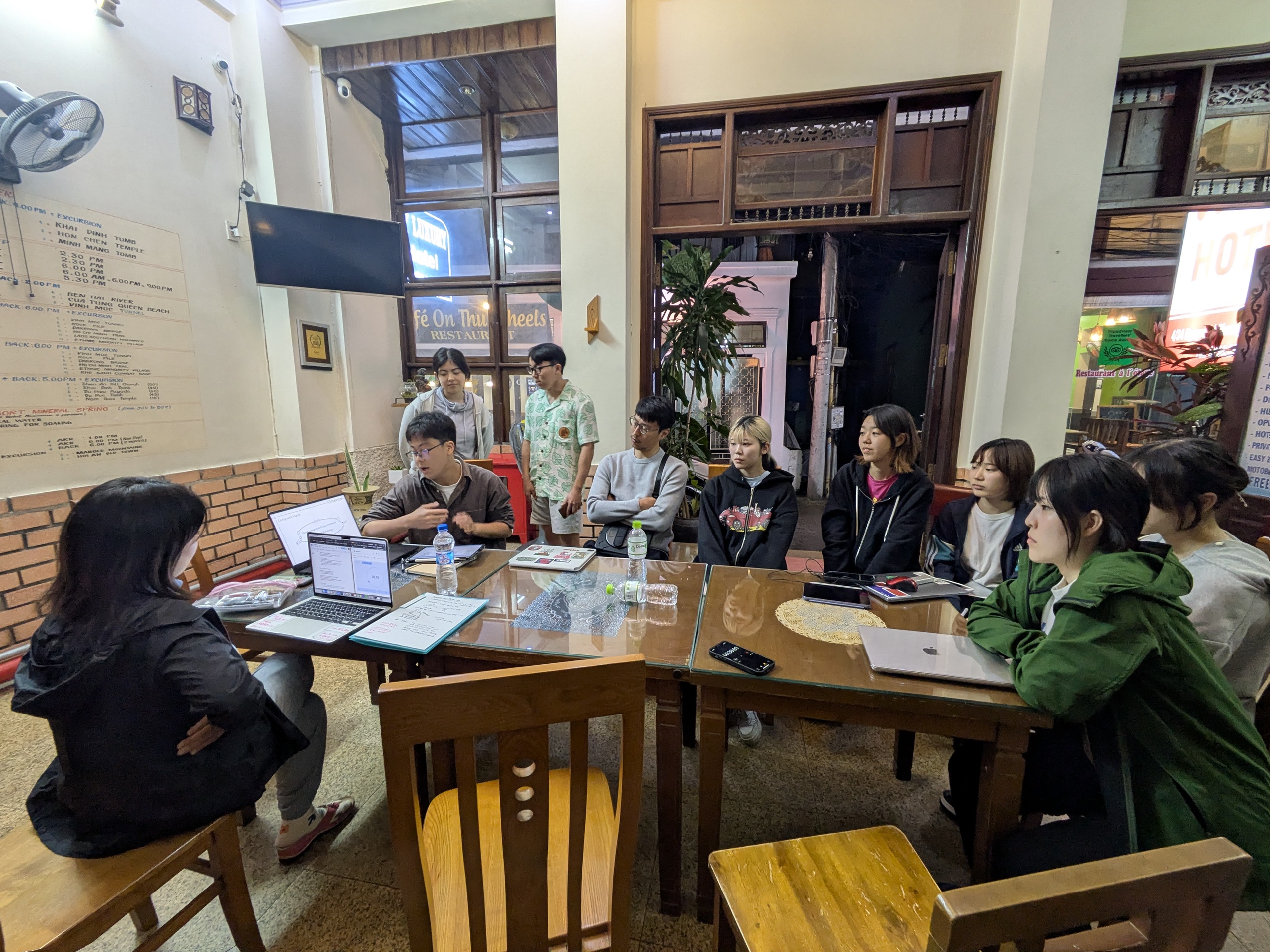
Practicing the Japanese case studies presentation in the accommodation lobby
Workshop
The goals of the workshop were to (1) identify the hidden uniqueness of each site, (2) design research questions that tackle the location’s prevalent issues and/or utilize its uniqueness, and (3) propose a vision of what the site could look like in the future. For it, four groups, with a melange of Japanese and Vietnamese students from the three universities, were created based on their site of interest.
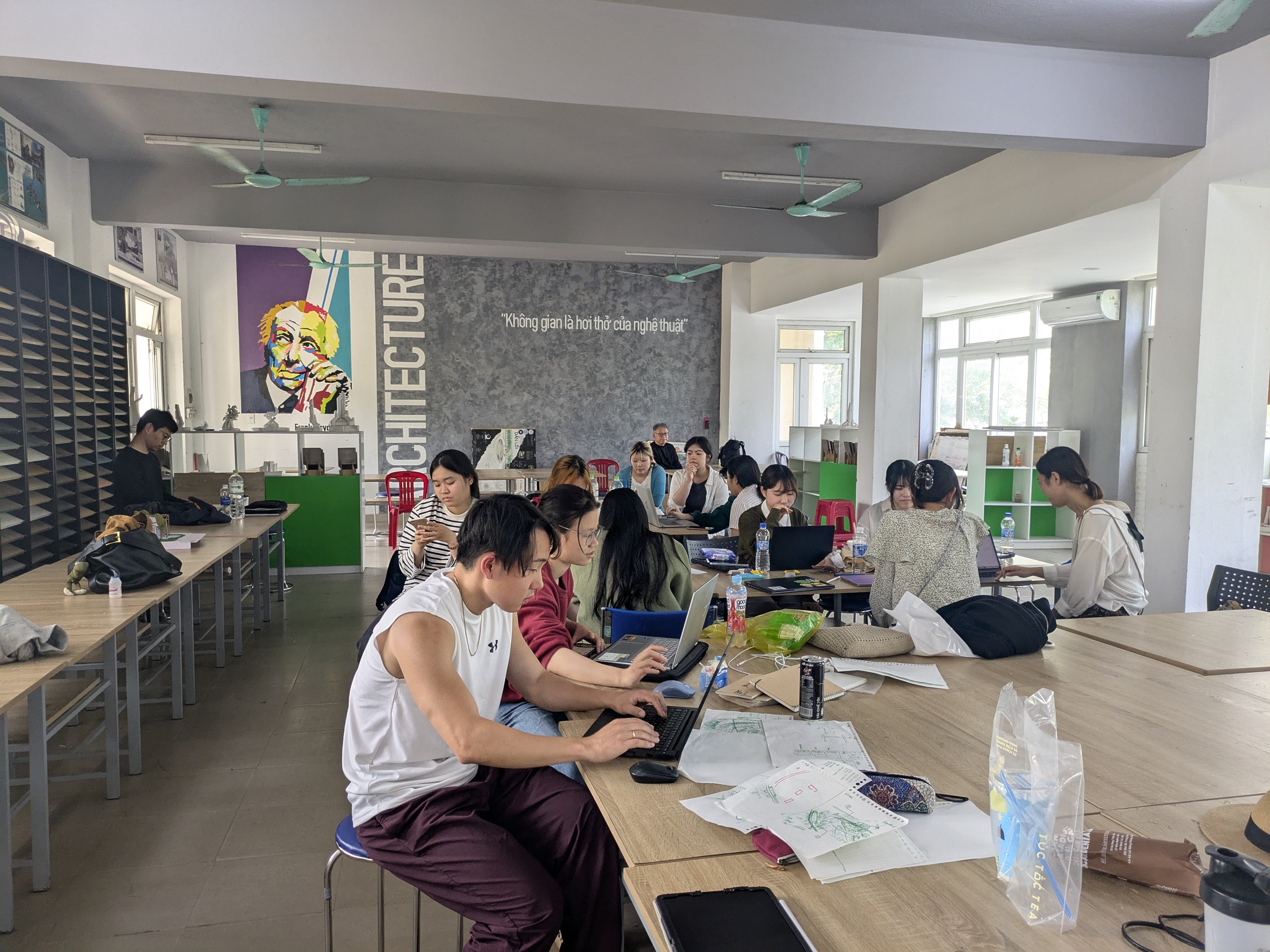
Students from Japan and Vietnam working on the workshop presentation
The An Truyen group focused on the cultural and flood-protection value of the village’s market, using it as a tool to tackle the uncertain future under the pressure of high-speed rail development and the uncertainty of climate change. The Duong No team investigated the agriculture and irrigation system of the village and proposed a vision for a future where water is not a divider but a unifying force that propels the village’s growth. Meanwhile, the Thai Duong group focused on building community resilience by utilizing the region’s specialty of fish sauce production as a focal point of tourism development. My team, the Thieu Tri’s tomb site, uncovered the underlying water network that connects the heritage sites to the agricultural lands. Subsequently, we focused our inquiries and propositions on the integration and diversification of heritage sites, water, and rice fields to ensure climate-resilient agriculture practices and tourism development.
The mixture of students in each group ensured an approach with diverse perspectives that value local knowledge and external observations as well as encouraging collaborative problem-solving and the cultivation of a long-term research network. It was an enriching environment where students could challenge their own assumptions, engage in meaningful dialogue, and produce more nuanced, well-rounded research findings. Meanwhile, feedback and comments during the final presentation from professors and faculty members sparked new ideas and spurred deeper investigation into each site.

The presentation by the Thieu Tri tomb team
Post-workshop
The post-workshop phase continued with a knowledge-sharing and discussion session at Hue Institute for Development Studies (Hue IDS) and further field investigations in each village according to one’s interest. In my case, with the help of a local interpreter, I was able to interview a village leader in my study area on the social aspects of village life and agriculture practices. It provided me with additional insights into village structure and traditions as well as corrected some misinterpreted field observations which spurred on another round of field survey. Additionally, I was also tasked with helping some research team members understand water infrastructure and flood-related issues and how to apply their knowledge to real-world challenges.
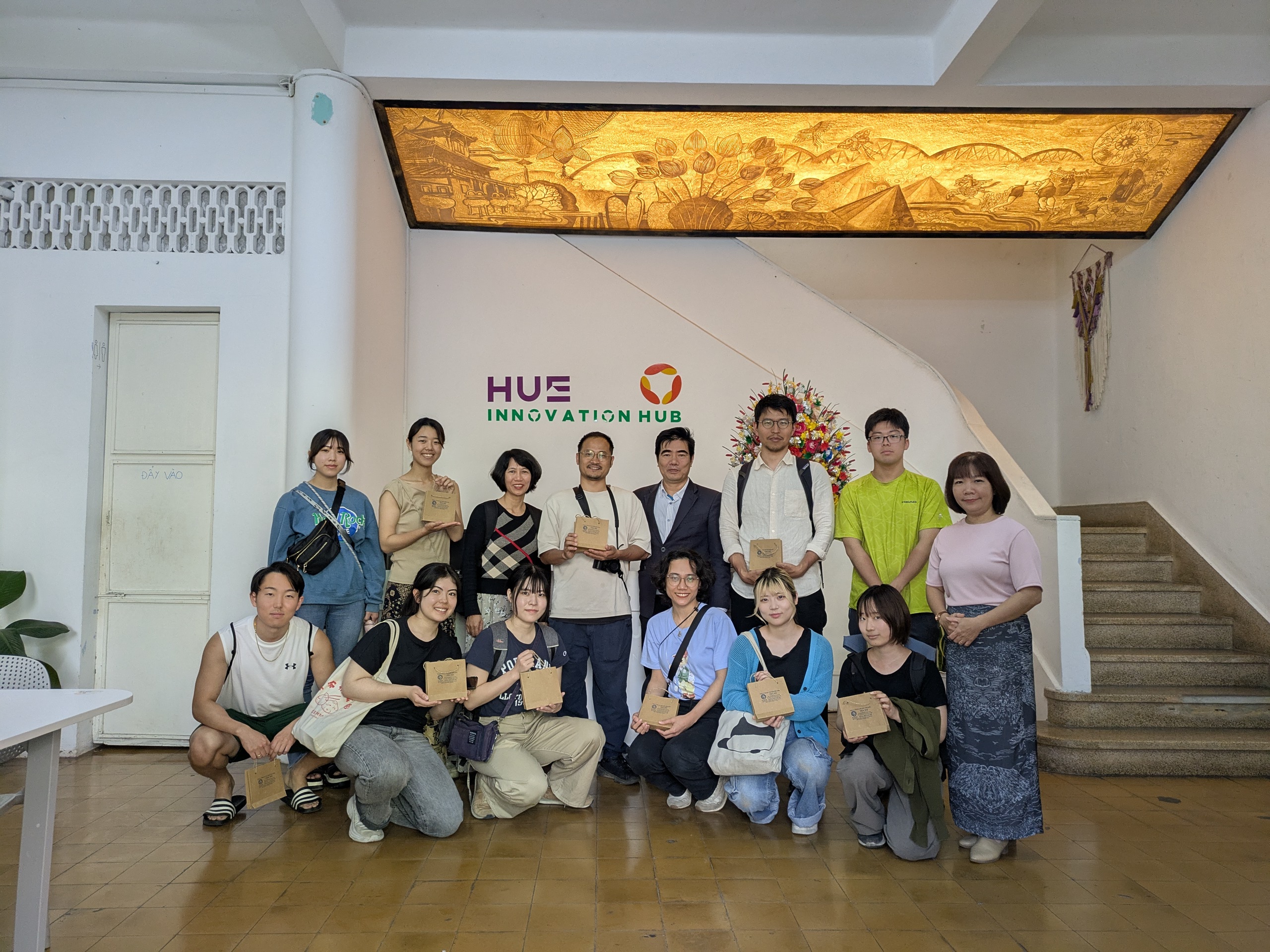
At the Hue Institute for Development Studies
Through additional interviews, field surveys, and discussions, we refined our understanding and bridged the gap between observation and analysis. These hands-on experiences reinforced the importance of collaboration—not only among researchers from different disciplines but also between academia and local communities.
After Hue
This research trip was not just an academic exercise; it was a testament to the power of international collaboration in addressing complex socio-environmental challenges. By weaving together the perspectives of students and professors from Japan and Vietnam, we have laid the groundwork for a more integrated approach to regional planning, heritage management, and climate resilience in the Huong River Basin. The foundation for future collaboration was also set during this research trip.
However, our journey does not end here because, as the dust begins to settle on this research trip, we find ourselves in different stages of our academic journeys. Some of us are refining our final insights, while others have already begun the rigorous process of writing academic papers and preparing submissions for upcoming conferences. The lessons learned in Hue are not just personal experiences nor are they confined to the classrooms—they are evolving into scholarly contributions that will be shared with a broader academic community.
Yet, this is just the beginning. The next workshop is already on the horizon, set for September, marking another step forward in Waseda ongoing efforts in Hue, Vietnam. In anticipation of this, Yaguchi Lab is recruiting more members into this dynamic exchange. With more voices and perspectives, we aim to deepen our interdisciplinary discussions and bring fresh energy into the project. Through continuous engagement, both in Hue and in academic forums, we are not only documenting the present but actively shaping the future of the region and its cultural legacies and heritage monuments.
This article was written by the following Student Contributor:
Srey Sokuncharia
Graduate School of Creative Science and Engineering



